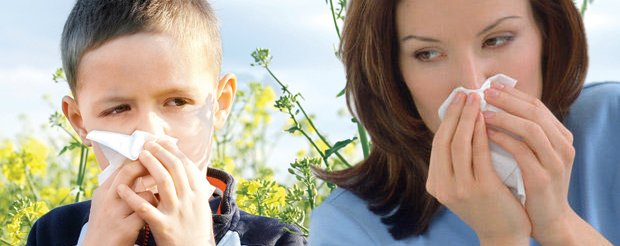

Discharge, itching in the nose and eyes, sneezing, itchy throat, which occur after the contact of allergy-causing substances (allergen) to the nasal mucosa The disease that progresses with complaints such as allergic rhinitis is called.


The cause is an abnormal reaction that develops against particles in the air that enter the nose with respiration. The terms hay fever, summer flu, and allergic rhinitis (nasal inflammation) are also used synonymously with allergic rhinitis.
The severity of allergic reactions occurring in this disease varies from person to person, some patients survive these allergic reactions very mildly, while for others they can be severe enough to prevent them from doing business and impair their quality of life.
Allergic rhinitis is divided into two subgroups as Intermittent (intermittent) and Persistent (Continuous) according to the duration of the complaints and three groups as mild, moderate and severe according to the severity.
Allergic rhinitis is not a life-threatening disease, but it is a disease that negatively affects people’s quality of life. Allergic rhinitis with loss of workday in adults and school days in children; Due to the high amount of money spent on treatment, it also harms economically. Therefore, diagnosis and treatment of allergic rhinitis is very important.
Allergic rhinitis is defined as inflammation (edema- non-infection-related inflammation) of the nasal mucosa (the membrane covering the inner surface of the nose). It is characterized by itching in the nose, sneezing, watery runny nose and nasal congestion. Symptoms such as headache, olfactory disorder and conjunctivitis may also accompany.
Allergic Rhinitis (flu) is a common disease. Its incidence is 9-20% in our country. This rate is increasing every year, as in other allergic diseases.
1. Allergic flu symptoms; It negatively affects daily life with symptoms such as runny nose, sneezing, itchy nose, nasal congestion, decreased smell, redness and watering in the eyes.
2. It negatively affects daily life with symptoms such as fatigue, perception difficulties and sleep disorders.
3. Treatment costs are also important. Repetitive and unnecessary antibiotic treatments in patients who cannot be diagnosed correctly increase the cost economically.
4. Coexisting diseases such as Sinusitis, Middle Ear Inflammation, Polyps and Asthma increase the importance of allergic rhinitis. In particular, the coexistence of asthma and allergic rhinitis is the situation that should be considered the most. Studies have shown that 20-40% of patients with allergic rhinitis also have asthma. In addition, 60-80% of asthmatic patients have upper respiratory tract complaints and findings. In fact, when the questioning in terms of rhinitis was done in a little more detail, the presence of rhinitis was found in 98% of the patients with allergic asthma.
TREATMENT OF ALLERGIC FLUSH WITH ACUPUNCTURE
Acupuncture treatment is a treatment without side effects. No drugs are used in the treatment. As the patient recovers, he stops using steroids and other drugs over time.
The treatment should first be started with cessation or reduction of the patient’s contact with the allergen stimuli. In the first stage, the patient should learn how to avoid the substance that he is allergic to and take protective measures such as a mask. This is the most important rule for the treatment to be effective. Despite all allergy tests performed in some patients, no allergen can be found. However, after starting the treatment, patients can detect which substances they are allergic to over time.
In recent years, acupuncture and allergic rhinitis (cold) and asthma treatment have become one of the most frequently applied treatment methods in the world and in Turkey.
Acupuncture strengthens the body’s immune system by increasing the release of interferon, thus increasing body resistance. Patients are less susceptible to both viral and bacterial infections. Fewer infections mean fewer crises. Acupuncture activates the natural edema solvents in our body. Stimulation of the ACTH point located at the representative point of the pituitary in the auricle with the acupuncture needle increases the secretion of ACTH, and cortisone is secreted with the stimulation of the Corticosteroid point located at the representative point of the adrenal gland. Cortisone has an edema-solving effect. Especially, the resolution of edema in the lungs and nose will allow the patient to breathe more easily.
Acupuncture increases the amount of serotonin and endorphins, giving the person peace and relaxation during treatment.
It has been determined that the secretions that cause allergic reactions are reduced by stimulating the anti-allergy points with the acupuncture needle. It was determined that immunoglobulin E, which plays the most important role in allergic reaction, decreased at the end of acupuncture treatment.
In addition to all these, the general balance of the body improves with acupuncture and the treatment of allergic rhinitis and asthma, and the incidence of allergic disorders along with other diseases is reduced.
Allergic rhinitis and asthma treatment with acupuncture varies from patient to patient, but takes an average of 20-30 sessions. Allergic flu and asthma treatment with acupuncture has no side effects. Although rare, the treatment can be repeated once a year, depending on the clinical course of the disease.

